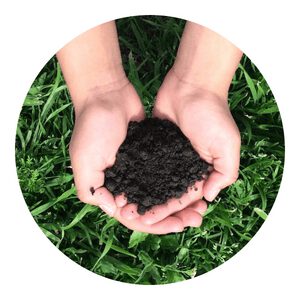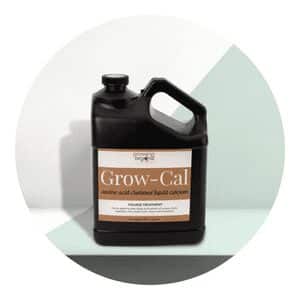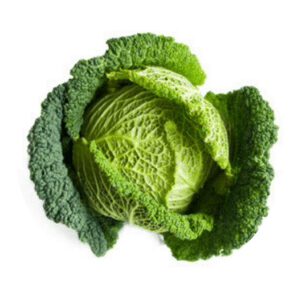How to grow Green Globe Artichoke
Green Globe artichoke is a unique and delicious vegetable that is sure to be a hit in your garden.
Growing this vegetable will require some extra effort, but the end result can be incredibly rewarding. With the right soil conditions and proper care, Green Globe Artichoke can reward you with a bountiful harvest.
In this article, we’ll take a look at the basics of how to successfully grow Green Globe Artichoke from seed or from transplanting.
Green Globe Menu
Brief history of the artichoke and its cultivation
The artichoke (Cynara cardunculus) is a thistle-like plant that has been cultivated for food since ancient times.
The artichoke is believed to have originated in the Mediterranean region, where it was used as a medicinal herb.
The first written record of the artichoke appeared in a Greek manuscript from the 4th century BC.
The artichoke was introduced to the United States in 1871 and was eventually grown commercially in California.
What are the benefits of eating artichokes?
Artichokes can be boiled, steamed, or grilled.
They are a good source of fiber, vitamin C, and potassium.
Artichokes are also a good source of antioxidants.
How to plant and care for green globe artichokes
Green globe artichokes are a perennial vegetable that can be planted in the spring or fall.
They are easy to care for and can be harvested in the late summer or early fall.
To plant green globe artichokes, you will need to dig a hole about 12 inches deep and 18 inches wide.
Add some compost to the hole and then place the artichoke plant in it.
Cover the plant with soil and water generously.
Verdant globe of artichoke, A winter's growth so unique. Round and green and soft to touch, Sprouting from the fertile earth. Full of flavor and nutrition, Once sliced, boiled and eaten with devotion. Brings delight to many chefs and tables, Grow Green Globe Artichoke yields amazing labels!
Chappy The Gardener
Harvesting and storing artichokes
When it comes to artichokes, fresh is best.
The peak season for these delicious vegetables is from March to May, so if you can get your hands on some fresh artichokes during that time frame, go for it!
But what do you do if you can’t get them fresh?
You can still enjoy artichokes by harvesting and storing them properly.
First of all, you’ll want to make sure you harvest your artichokes at the right time.
They should be firm and have tight leaves. If they’re starting to open up, they’re probably too ripe.
Cut off the stem about an inch from the base of the artichoke and snap off any brown leaves.
Then, immerse them in a bowl of cold water with a tablespoon of lemon juice or white vinegar added to it.
Do globe artichokes come back every year?
Most people know that globe artichokes are a perennial plant, but do they come back every year?
The answer is yes! Globe artichokes will come back every year as long as you don’t cut the plant down to the ground.
They may not produce any artichokes the first year after being planted, but they will grow back and produce artichokes eventually.
The health benefits of eating artichokes
Artichokes are a delicious and nutritious vegetable that offer a wealth of health benefits.
They are low in calories and high in fiber, which makes them a great choice for people who are trying to lose weight or maintain a healthy weight.
Artichokes are also a good source of vitamins C and K, as well as minerals such as potassium and magnesium.
Benefits of Using Organic Fertilizer for Green Globe Artichoke
Organic fertilizer is an important factor when it comes to successfully growing Green Globe Artichoke.
Organic fertilizer can offer numerous benefits, from improved soil health to better yields and a reduction in the need for chemical-based fertilizers.
Organic fertilizers are slow-release formulas that add essential nutrients to the soil without causing any harmful runoff or other environmental damage.
Rich in nitrogen, phosphorus, potassium, calcium and trace minerals, organic fertilizers provide a natural balance of nutrients that promote strong root development while improving water retention and air circulation around the roots of your plants.
The result is improved plant growth and increased harvests with bigger yields than traditional non-organic fertilizers can provide.
Tips for Selecting the Right Organic Fertilizer for Artichokes
Organic fertilizers are an important component of successful artichoke planting and harvesting.
Whether you are growing Green Globe Artichokes in your backyard or on a commercial scale, understanding how to select the right organic fertilizer is essential for producing healthy, flavorful artichokes.
Here are some tips to keep in mind when selecting organic fertilizer for your artichoke crop:
First, consider the nutrient needs of artichokes.
They need higher levels of phosphorus and potassium than nitrogen to grow successfully, so look for organic fertilizers that contain higher amounts of these two minerals.
Additionally, periodically check soil pH levels throughout the season; optimal soil pH should be around 6-6.5 for artichokes as they prefer slightly acidic soils.
Depending on the specific needs of your soil, adjust your choice of organic fertilizer accordingly.
How long does it take for a globe artichoke to grow?
Growing a green globe artichoke is a rewarding experience that requires some patience.
The process can take anywhere from 6 to 8 months, depending on the method of planting and care.
For those looking to grow their own globe artichokes, it’s important to understand what goes into growing them and how long they take.
Globe artichokes are typically grown from seed or from transplanted seedlings. Seed planting takes longer but results in a bigger harvest if done correctly.
Planting starts with the sowing of seeds indoors at least six weeks before the last expected frost date for your region.
Transplanting should occur outdoors in mid-spring when temperatures reach 60 degrees Fahrenheit (15 Celsius).
Once planted, the plants will likely require four months of growth prior to harvest time, making the total growth process span about 6-8 months’ time.
Tips How To Grow Green Globe Artichoke Hydroponically
Growing artichoke hydroponically is a great way to get the most out of your garden.
Hydroponics offers many advantages over traditional soil-based growing, and when done correctly, you can expect good production with very little effort.
The first step in growing Green Globe Artichoke hydroponically is to choose the right system for your needs.
You can either go for a deep water culture or a nutrient film technique system, depending on how much space and resources you have available.
For larger systems, it’s recommended to use a timer or automated system that allows for regular watering and nitrogen supplementation.
Can you grow Globe artichokes in pots?
Globe artichokes (Cynara cardunculus) are large, thistle-like plants that produce edible flower buds.
The plants are hardy in zones 6-10 and can reach heights of 3-4 feet.
Globe artichokes can be grown in pots, but they need plenty of space to grow.
A pot that is at least 18 inches wide and 18 inches deep is recommended.
The soil should be rich and well-drained. The plants need full sun and regular watering.
How To Grow Green Globe Artichoke in a Raised Beds
Growing Green Globe Artichoke in a raised bed is an easy and rewarding way to enjoy this delicious vegetable.
Whether you are looking for a new challenge or simply want to grow something different, the Green Globe Artichoke is an ideal choice for any garden.
Raised beds allow for more control over soil moisture, nutrient levels and drainage — all factors that can have a positive impact on artichoke production.
The first step to growing Green Globe Artichokes in a raised bed is preparation.
Begin by adding organic matter such as compost and aged manure to the raised bed soil.
Make sure the area gets at least six hours of sunlight each day and that it has good drainage.
For best results, raise the beds 8-12 inches high so they’re well drained but still hold enough water for your plants.
Recipes for cooking with artichokes.
Artichokes are a delicious vegetable that can be used in a variety of recipes.
They can be boiled, steamed, or roasted.
Here are some recipes for cooking with artichokes.
Roasted Artichokes with Lemon Aioli
Grilled Artichokes with Balsamic Reduction
and Steamed Artichokes with Garlic Butter.
In conclusion,growing green globe artichoke is an easy, rewarding pastime that will provide you with fresh homegrown veggies for years to come.
Planting and caring for green globe artichokes is relatively simple, and the cost of growing them can be minimal.
Plus, their unique flavor and texture offer something special that store-bought artichokes simply cannot match.
With a little knowledge and effort, you can have success growing these edible thistles in your own backyard.
Click To Grow
Helps Us Grow – Share If You Like

















